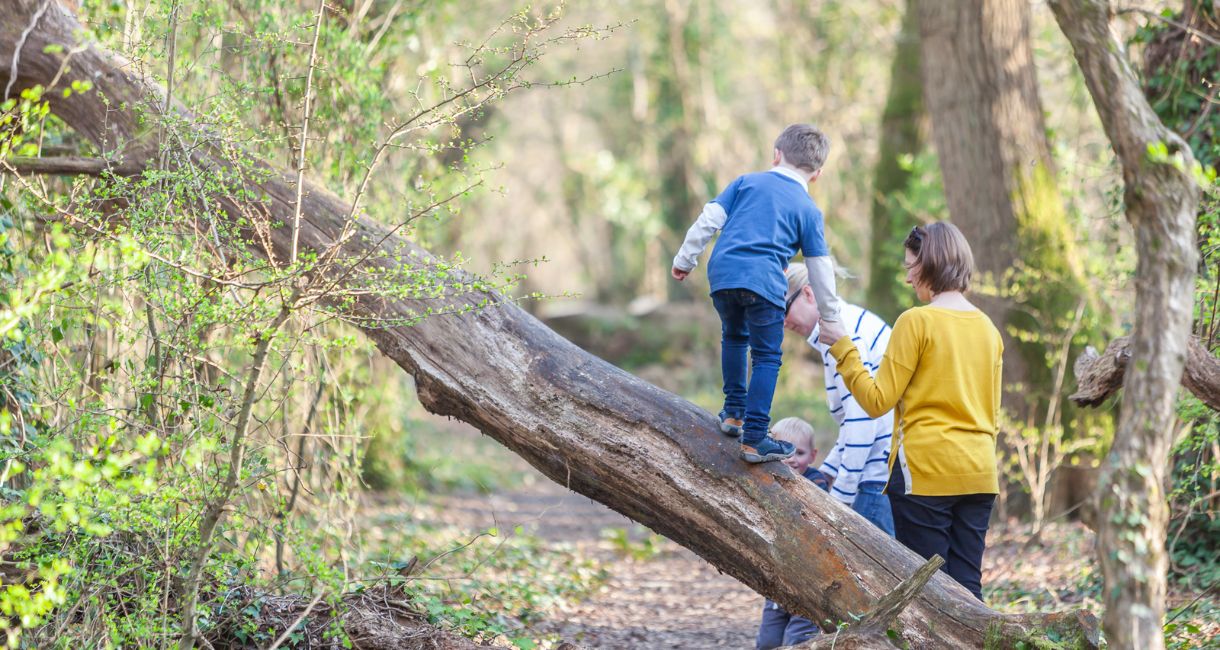A woodland walk is a great way to get some exercise, fresh air, and time in nature, no matter what the weather is like.
In the winter, you can enjoy the beauty of frost-covered trees and the crunch of the ground under your feet. During the Autumn you can enjoy the specactular show of the changing colours. In the spring, you can see the flowers blooming and the birds singing. In the summer, you can cool off in the shade of the trees and listen to the sound of the wind in the leaves. No matter what the weather is like, a woodland walk is a great way to relax and de-stress.
Here we pick seven Isle of Wight woodland walks to try…

- Parkhurst Forest is one of the largest forests on the Island and has plenty of paths for you to pick, so you never feel like you're doing the same walk twice! The site is partly a site of Special Scientific Interest (SSI) with a mix of ancient woodland and heathland and is managed by Forestry England and was once believed to be a medieval hunting ground. You’ll find a red squirrel hide nestled within the trees which is perfect for a spot of squirrel spotting, but other wildlife to watch out for include nightjars and long-eared owls. Be sure to spot squirrel carvings as you wind through the paths and tracks.
- Firestone Copse set on the outskirts of Wootton and Havenstreet is an evergreen forest, with a mix of English Oak, Ash, and Grand Fir, as well as coniferous Douglas, Cedar and Scots Pine. There are plenty of trails to choose from, including buggy-friendly and a wheelchair accessible route. Spot dens made from fallen branches at the regular Forest School and, if you’re lucky, you’ll also find a fab pop-up coffee bus in the car park.
- The largest of the Isle of Wight forests, Brighstone Forest offers some amazing views over the surrounding countryside. Stretching across hilly ridges from Chessell to Idlecombe, you’ll discover ancient burial barrows on the outskirts of the forest, as well as walking part of the famous Tennyson Trail. From the southern edge of the first, the vista over to the west is just stunning, as you take in the coastline and the Military Road running alongside it.
- Combley Great Wood offers a great family adventure walk. Starting at Combley Road, this two mile circular walk takes you past Deadman’s Brook and through the ancient forest, past a quarry and Combley Farm Towering conifers stand tall, while sunlight filters through the dense canopy, creating a mesmerizing play of light and shadow. The forest floor is carpeted with an array of ferns and wildflowers, inviting you to explore its hidden treasures.
- If spotting a red squirrel is high on your agenda, Alverstone Mead is one of the top places on the Island for them. Part of the Alverstone Marshes site, a site of Special Scientific Interest, sits within an Isle of Wight National Landscape (formerly known as Area of Outstanding Natural Beauty) land and consists of four reserves - Alverstone Mead, Bensteads Marsh, Youngwoods Copse and Bretts Meadow. You’ll discover tranquil woodland, wet and wildflower meadow and a haven for wildlife including rare flowers and invertebrates, especially dragonflies and butterflies. Spend time in the hide to spot a squirrel and maybe a kingfisher or treecreeper.
- Bouldnor Forest Nature Reserve on the outskirts of Yarmouth plays host to a variety of habitats, including heathland, pine forest, seagrass beds and cliffs. Packed with wildlife, you can even download a tick sheet before you go from the Hampshire and Isle of Wight Wildlife Trust - spot birds such as goldfinches and bullfinches; the famous red squirrel and an array of woodland butterflies. The coastal path that meanders through is lined with restored clay heaths, including pale dog-violet, heath dog-violet and cyperus sedge. Following the path will take you to a small beach, perfect for shell combing and fossil hunting.
- For a carpet of bluebells in spring, Borthwood Copse near Sandown is the place to visit for that instagram-worthy shot. Borthwood is one of the numerous copses which make up part of the medieval forest which covered most of the eastern end of the Island. Wander under ancient oak trees and chestnut and hazel coppice. Managed by the National Trust, traditional woodland management has helped to keep a variety of wildlife such as bluebells, red squirrels, dormice, woodland bat in healthy population. It’s also is noted for its many rare beetles and other insects, which depend on the decaying wood in the older trees. A very small section of Borthwood Copse is used for mountain biking and BMX jumps too, but check before you go.
For more ideas of what to do in our forests, check out our blog post about Forest Bathing here.



 to add an item to your Itinerary basket.
to add an item to your Itinerary basket.






.png)




